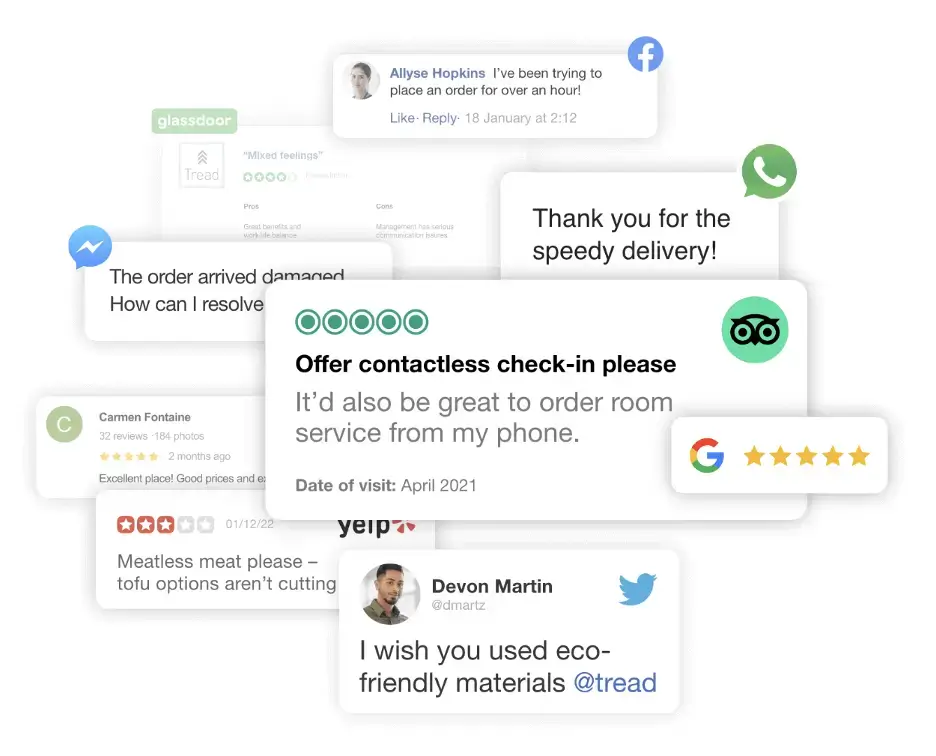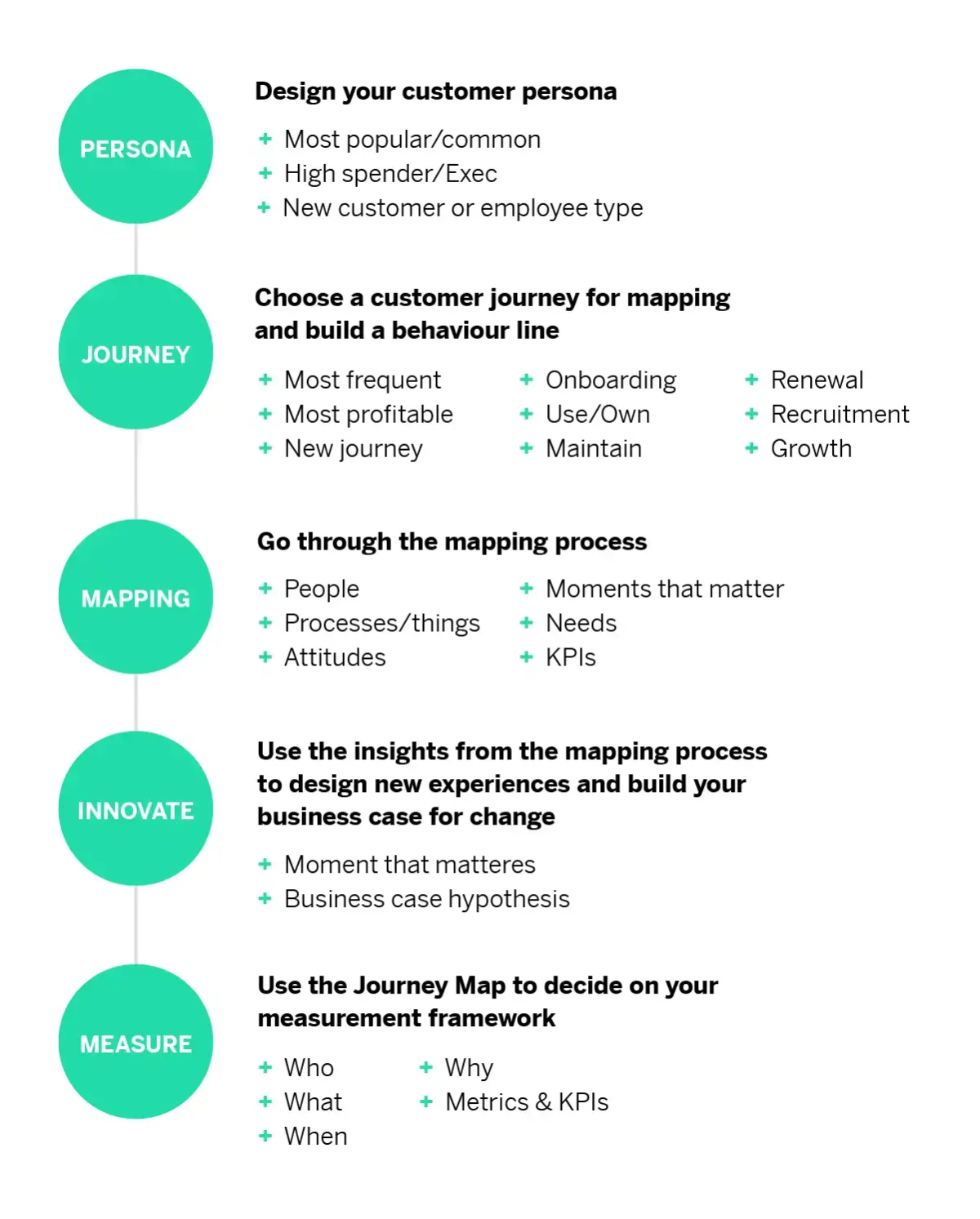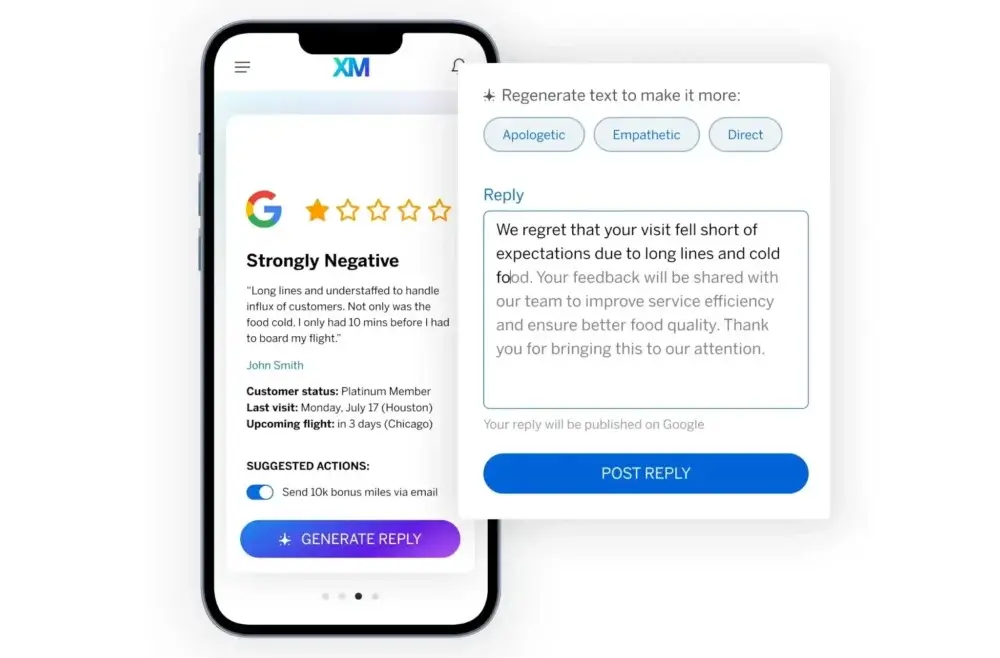What is omnichannel customer service?
Omnichannel customer service is the ability to offer people support across every possible channel and touchpoint – and doing so in a completely seamless, joined-up way.
In practice, that means allowing customers to take the customer support journey that best suits them, even if that means jumping from one channel to the next (and back again).
If someone posts on a social media platform that they’ve encountered a problem, for example, it might be more convenient for them to actually solve that issue using an IM chat session, or via text. An omnichannel customer support journey is one that allows them to do that without repeating themselves.

Omnichannel customer service means being available and engaging with customers on all channels
But this also means never missing an opportunity to help a struggling customer out – a true omnichannel customer service strategy is one where every single channel (owned and third-party) is monitored for potential issues, and where proactively reaching out is standard practice.
Behind the scenes, omnichannel customer service requires software that can bridge the gaps between all these touchpoints to provide customer service agents with a cohesive, all-encompassing view of each customer’s support history.
Free eBook: Reimagining omnichannel CX in the age of AI
Omnichannel vs multichannel: What’s the difference?
Multichannel customer service usually means relying on several key touchpoints to try and filter customers through when dealing with issues. The more channels you can offer, the better, but where a multichannel approach can fall down is when those independent touchpoints are disconnected.
That disconnect often results in customers feeling unheard when they move from one channel to the next and have to repeat themselves or have to explain their issues repeatedly.
Omnichannel means connecting touchpoints in a unilateral, consistent customer service strategy. It means treating each touchpoint as an equal, vital part of the customer support journey, and leveraging insights from each to spot trends and proactively close experience gaps.
Learn more about omnichannel vs multichannel customer experience
Benefits of omnichannel customer service
Offering excellent customer service has never been more important. Customers have more choice – and switching brands is simpler – than ever, so customer service offers a vital opportunity for differentiation.
Salesforce’s 2024 research shows that 69% of consumers now expect consistent customer interactions across departments and touchpoints, but that’s not what they’re getting: Deloitte research from the same year suggests that only 13% of companies are able to seamlessly carry customer data, history, and context over interactions and channels.
This disparity ought to be a focus because, increasingly, customers won’t tell you when you’re failing. In our 2026 Consumer Trends research, we found that only 3 in 10 respondents will now take the time to explain why they leave a business. That means that if the omnichannel experience lets them down, you might not know about it until it’s too late.
Get things right, though, and you’ll reap tangible rewards. SQM Group research shows that seamless channel-hopping results in customer satisfaction (CSAT) scores 39 points higher than instances when omnichannel journeys fall short. That means stronger customer retention, and
Besides all that, implementing an omnichannel customer service strategy brings with it a raft of business benefits:
Streamlined issue resolution
By uniting data from every touchpoint, customer service teams benefit from insight that can help solve issues more quickly, reducing both time and cost to serve. If a customer moves from one channel to another without having to start their interaction from scratch, their issue can be handled smoothly as one cross-touchpoint interaction.
Trend analysis
Building bridges between otherwise disparate touchpoints allows businesses to map customer issues and sentiment in a much more thorough way – turning the contact center into a hub for customer experience insights. The benefit here is that emerging issues will be easier to spot.
If, as a simplified example, a software bug has been reported by one customer per channel, teams working independently from one another won’t realize it’s a widespread issue. But with a contact center management tool that spans and unites every channel, frontline teams can be alerted to the fact that a bunch of customers are reporting the same issue at once. This will let them flag emerging issues to the CX team before they have a chance to become more widespread reputational risks.
Personalized experiences
Our research shows that some 64% show a genuine appetite for tailored experiences, and using customer service and contact center tools that create a cohesive link between channels can also help foster a more unified, personalized customer experience. If, for example, a customer service agent is imbued with holistic, contextual information about a customer’s history, they’ll be able to reference past issues or purchases in a way that makes the customer feel listened to, understood, and valued.
Greater customer satisfaction
Customers who have their support queries solved quickly, easily, seamlessly, and on the channels that matter to them are much more likely to leave feeling satisfied with how things went. Offering best-in-class omnichannel customer service is a great way to differentiate your business from the competition in a battleground that really matters to customers. If every part of the customer journey feels unified and platform agnostic, you’ll naturally drive customer satisfaction and, in turn, loyalty.
The importance of an omnichannel customer service program
Today’s customers expect not to have fractured, fragmented journeys. The expectation instead is that companies will be able to identify and follow them across any touchpoint they choose without friction.
So omnichannel customer service is both a great way to keep customers happy and an operational efficiency win. The process normally involves bringing all your customer support streams under one digital roof, which can help in a couple of key ways:
Prioritization
True omnichannel customer service means having channels where customers can self-serve, as well as channels that can handle queries on an automatic basis – like AI-powered chatbots – working alongside human agents.
The result is that your contact center can begin to prioritize customer queries almost by itself; these other touchpoints and streams can distribute some of the workload, freeing up agents for the queries that definitely need a person on the end of the phone.
Reducing repeat contact
A digital contact center that comprehensively tracks customer calls, texts, emails, IMs, and social media posts across touchpoints transforms those separate instances into one long, interweaving string of interactions. This ultimately helps issues get solved faster, with less repetition and less need for callbacks.
Balancing omnichannel journeys with customer data privacy
To enable truly omnichannel customer service journeys, you need to collect customer data. Data is the connecting tissue between channels, where the right, cross-channel information can ensure customers don’t need to repeat themselves, that their interaction history is context-rich, and that they feel able to start an inquiry on one channel and finish on another.
Thing is, there’s a balance to strike here – one that can only come from operating a smart, considered and transparent omnichannel customer service program.
We say this because our 2026 Consumer Trends research shows a growing wariness around the way businesses collect and use data. Currently, while research shows some 64% show a genuine appetite for more tailored, intuitive experiences, only 41% believe the benefits justify the privacy costs.
When it comes to omnichannel customer service strategy, that means walking the line between collecting enough customer data to enable seamless movement between touchpoints, and not overstepping the mark.
A robust omnichannel customer service program is one that’s built on privacy-centric customer data collection, with transparency around what’s being collected and what it enables. This means using tools that can keep customer data.
Channels included in an omnichannel customer service strategy
Unlike multichannel customer service, omnichannel is all about being available everywhere, seamlessly. Or, in other words, being where your customers are, whenever they need you.
But being truly omnichannel also requires that businesses work to link those touchpoints together, bridging physical and digital divides with context-rich customer information. Here are the most common channels that customers expect to be able to move between…
Phone
Still one of the most important channels for urgent or complex issues, phone calls allow customers to speak to a real human agent – helpful for talking through something that’s not easily explained in a back-and-forth text form. Ideally, contact center software allows agents to see full customer history while on a call.
Email is better suited to non-urgent queries, as well as ones where a lot of detail, context or supporting documents are needed. Emails that come into contact centers are usually assigned an identifier via a ticketing system, for tracking and follow-up.
SMS and messaging apps
Text-based chats allow customers to dip in and out of an inquiry when it suits them – making it quick, always on, but without the time pressure of being on a call. Messaging apps, like Facebook Messenger or WhatsApp, are similar options.
Social media
As well as being used for marketing and brand engagement, social media platforms have become important customer service destinations. Customers reaching out on platforms like X (formerly Twitter), Facebook, TikTok or Instagram expect that their issues can be handled on that platform as seamlessly as on any other channel – usually by moving the chat to direct message (DM).
Live chat
Live chat portals – manned by human agents or AI chatbots – enable real-time assistance without the need to pick up the phone. The benefits here are that businesses can offer 24/7 availability, where issues can either be solved quickly or triaged to a different channel if needed.
Self-service portals
FAQs, knowledge bases and community forums empower customers to find answers to common queries for themselves. Account dashboards, meanwhile, act as personalized spaces where customers can manage orders, view history, or open support tickets.
Learn more about customer self-service
In-person, in-store
For businesses with physical locations, the in-store customer experience is just as important as any digital channel. What’s vital in an omnichannel customer service is that data and interactions sync across online and offline touchpoints.
Tying things together: Customer experience platforms
Omnichannel customer service requires more than simply offering support on all of the touchpoints listed above – businesses need to integrate and unify interactions across every single one. Customer experience management platforms and CRM suites fulfil that duty by linking customer data, conversation history, behavioral analytics, and agent workflows.
Developing an omnichannel customer service strategy
Building an omnichannel customer service strategy relies on being able to understand where your customers are, where they want to be, the journeys they take, and the tools you’ll need to bridge all those experiences and touchpoints.
There are four main steps to this process:
- Map your customer journeys
- Gather insights
- Invest in the right technology
- Learn and refine
Let’s take a look at each one in turn, and explore what it really takes to build a seamless customer experience through modern, connected customer service:
Map your customer journeys
If you want to be able to cater to every channel under the ‘omnichannel’ banner, you first need to understand customer preferences. Customer journey mapping is a great start here. It involves building out customer personas that you can send along hypothetical customer journeys.

Gather stakeholders from across customer experience and see how many of these journeys you can map out. You’ll be surprised at just how many touchpoints you’ll realize the average customer may want to use at any given stage of their journey.
Gather insights
Customer journey maps are a great tool, but they can only get you so far. Actual customer data can help you go further – and you can gather this from a variety of sources. First, ask your various teams for their qualitative input.
Are there channels and touchpoints they feel are being underserved based on data from the tools they have? How does that align with customer behavior data points within the contact center? Are there outliers? Do customers tend to start on one channel more than others? These findings will help you build a picture of journey flows that need to be catered to.
You can also ask customers directly. Soliciting feedback on your current customer service offering can help shine a light on (sometimes multiple) channels and areas where things are lacking, as well as which touchpoints are high priority.
Invest in the right technology
Omnichannel customer service simply isn’t possible without a contact center management tool that can scour every channel, listen to and understand conversations, and build a holistic understanding of each customer’s history.
It’s these abilities that drive truly multimodal customer support, and it’s the insights that you’ll garner from offering this at scale that will continue to be transformative for the overall customer experience. To that end, you’ll need customer service software imbued with AI and natural language processing, alongside social listening features and the ability to prompt human agents with suggestions formed from customer data.

CX for Contact Center, for example, equips agents and managers with AI-powered insights and tools that ingest and analyze data from every single channel and touchpoint – using what it learns to uncover what’s driving low-score customer reviews as well as offering personalized response suggestions that help customer care teams quickly resolve issues – helping them build stronger relationships.
Learn and refine
Building an omnichannel customer service strategy is far from a one-time process. It’s about constant iteration and improvement based on ongoing data collection, acting on insights, and feeding what you learn up the chain to the people designing the front end of the overall customer experience.
Customer support is an ever-evolving industry, so it pays to constantly monitor customer behavior, as well as agent and channel performance. Use what you learn to your advantage by better allocating resources, improving the customer-facing prompts and links between common connecting channels, and fine-tuning your customer journey mapping.
Omnichannel customer service examples
Need to see all this in action? Here are two hypothetical examples where omnichannel customer experience can really boost the customer experience – and drive customer satisfaction at the same time.
Online banking
A customer is trying to set up a separate account, but the bank’s app isn’t responding. They write an angry post on X about the issue. An agent is automatically alerted to this, so they reply to the customer asking them to DM them the details. Following identification, an agent sends the customer an IM in the bank’s app to try and resolve the problem.
At the same time, the bank’s contact center management suite flags that multiple customer interactions seem to be about the same issue – across multiple channels. This helps management raise a ticket with the development team to implement a fix.
Learn more about CX for retail banking
Mobile carrier
A customer gets billed twice in the same period in error. To solve this issue, they fire up the carrier’s mobile app on their way to work and start an IM chat with its digital assistant. The issue is more complex than the chatbot can handle by itself, so it automatically loops in a human agent to join the chat.
However, by this time the customer has reached work, so they ask to move the conversation to SMS so they can continue things over the course of the day without worrying that they’ll be booted from the chat. Once everything’s resolved, they get an email clarifying everything.



